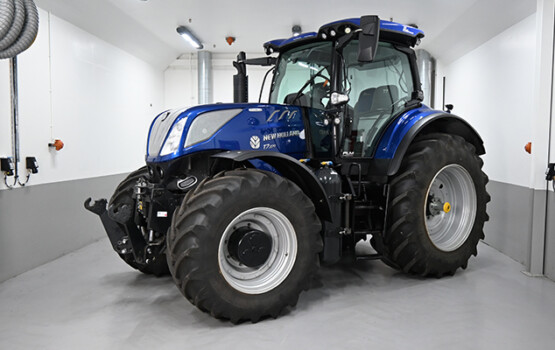Portal for more climate-friendly mobility
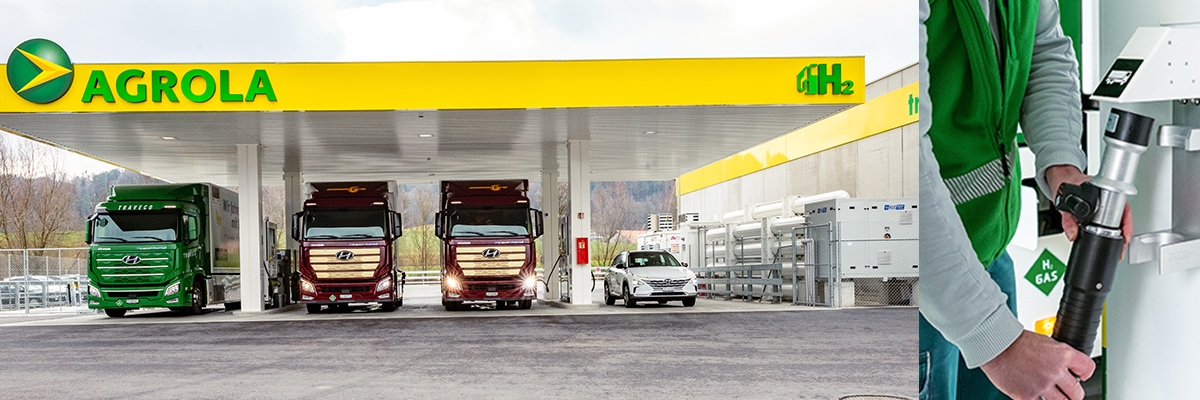
That’s why H2 refuelling is a matter of trust
Filling stations in Switzerland are regularly calibrated. This ensures the safety of those filling up and also the correct amount of fuel in the tank by checking the technical equipment. Surprisingly, however, this does not apply to all fuels. The details.
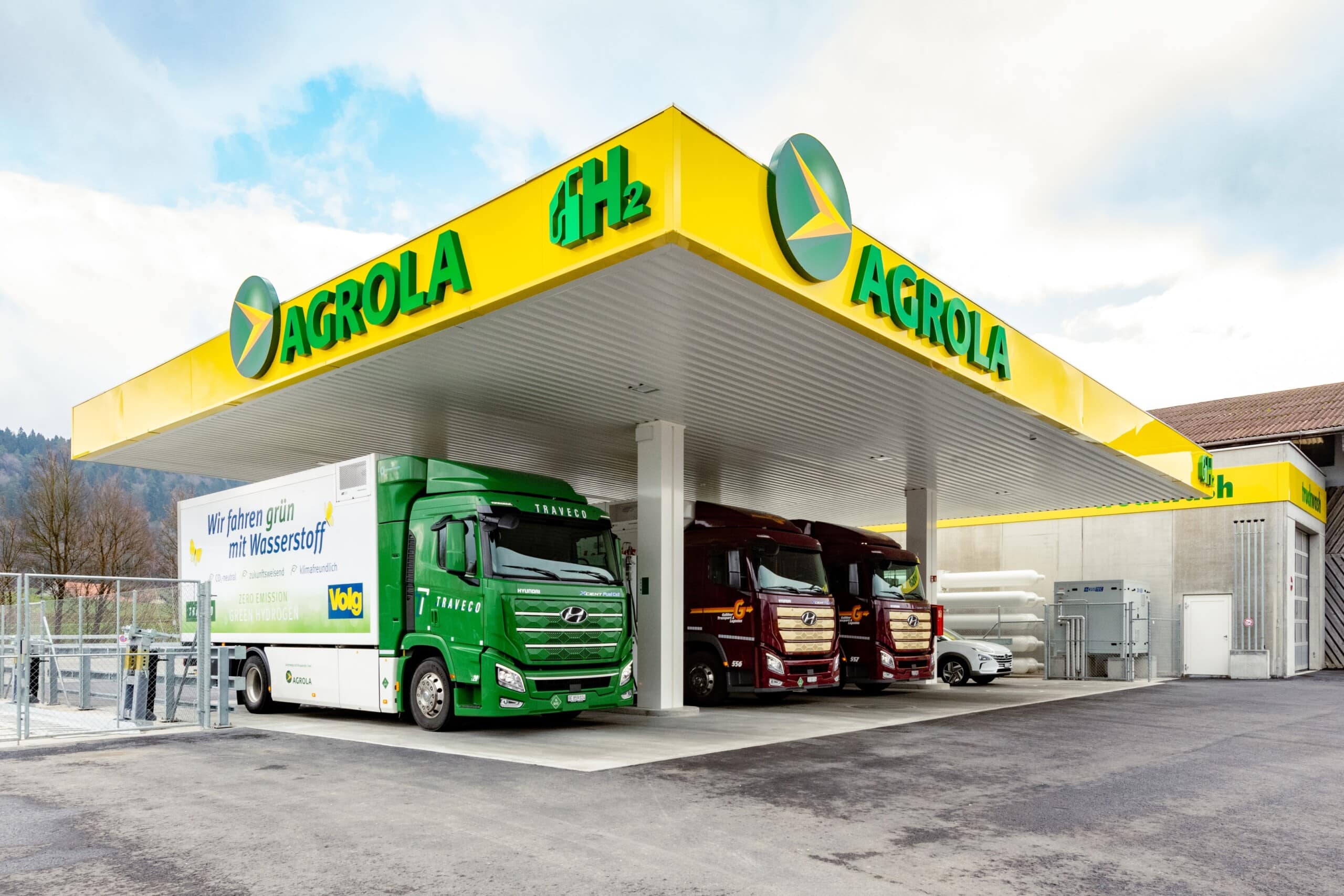 A new energy hub for Lucerne and at the same time the 13th hydrogen filling station in Switzerland, at Agrola in Schötz LU. Source: Agrola/Marion Nitsch/Lunax
A new energy hub for Lucerne and at the same time the 13th hydrogen filling station in Switzerland, at Agrola in Schötz LU. Source: Agrola/Marion Nitsch/Lunax
At the end of January, one of the most powerful hydrogen filling stations in Europe went into operation in Schötz LU. Three hydrogen-powered lorries and one car can be refuelled with green hydrogen at the same time. Parallel refuelling is made possible by the installation of additional medium-pressure storage tanks, which are continuously filled with hydrogen from the mobile containers by means of compressors. “Numerous logistics companies are located in the immediate vicinity of our site. In close cooperation with them, a pioneering energy hub has been created,” says Mark Muff, Head of Energy and member of the management of Landi Luzern-West. This is the thirteenth hydrogen filling station in Switzerland.
In addition, there are about 150 CNG filling stations in Switzerland, where cars and trucks with CNG engines can also fill up with biogas and thus be on the road in an almost CO2-neutral manner. Compared to nearby countries, however, the LNG filling station network in Switzerland is not yet very dense. Nevertheless, trucks with LNG engines can already fill up at three semi-private and one public filling station in Switzerland, where the gas is cooled down to minus 160 degrees and thus liquefied.
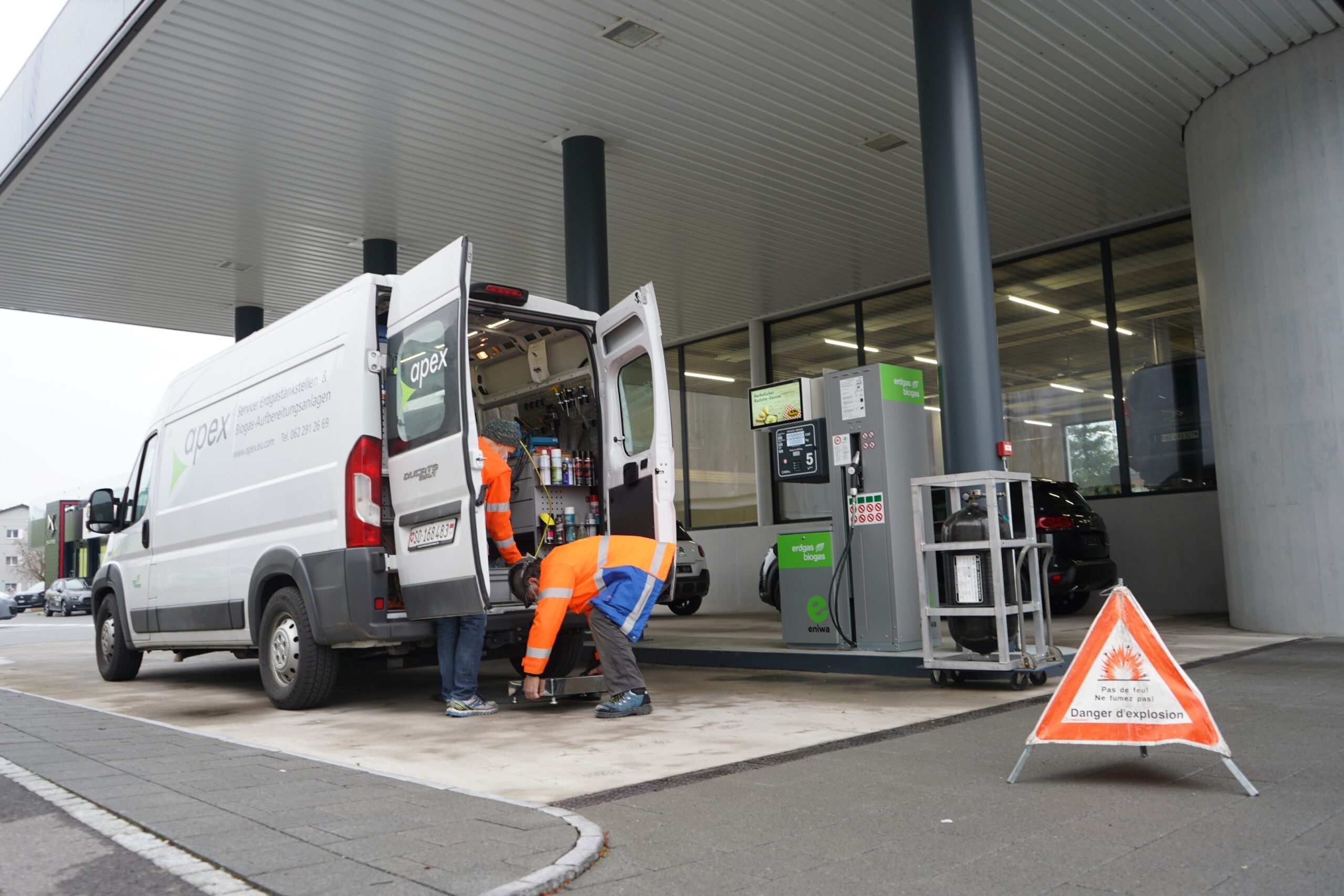 CNG dispensers in Switzerland have to be calibrated every two years. Here are two experts from Apex during a calibration. Source: CNG-Mobility.ch
CNG dispensers in Switzerland have to be calibrated every two years. Here are two experts from Apex during a calibration. Source: CNG-Mobility.ch
But who actually takes care of the calibration of the most diverse filling stations, so that on the one hand safety and on the other hand also the accuracy of the tank quantity is guaranteed? “In Switzerland, federal law regulates which measuring equipment must be calibrated. The regulations are found in the Measurement Act, the Measuring Instruments Ordinance and several ordinances of the Federal Department of Justice and Police,” explains Brigitte Hager, media spokesperson for the Federal Institute of Metrology (Metas).
According to these regulations, 41,955 petrol and diesel pumps and 306 natural gas and LPG pumps were subject to calibration in 2021 throughout Switzerland. Depending on the type of measuring system used, calibration is carried out annually or every two years. And the cantonal calibration offices are responsible for this calibration. Brigitte Hager adds: “If the vehicles are not refuelled with liquid gas but with compressed gas at so-called LNG fuel pumps, they are considered CNG fuel pumps for calibration purposes and are subject to calibration. As far as refuelling with liquid gas is concerned, technical and legal issues still need to be examined in more detail in the coming months before the situation with regard to measurement law is clear.”
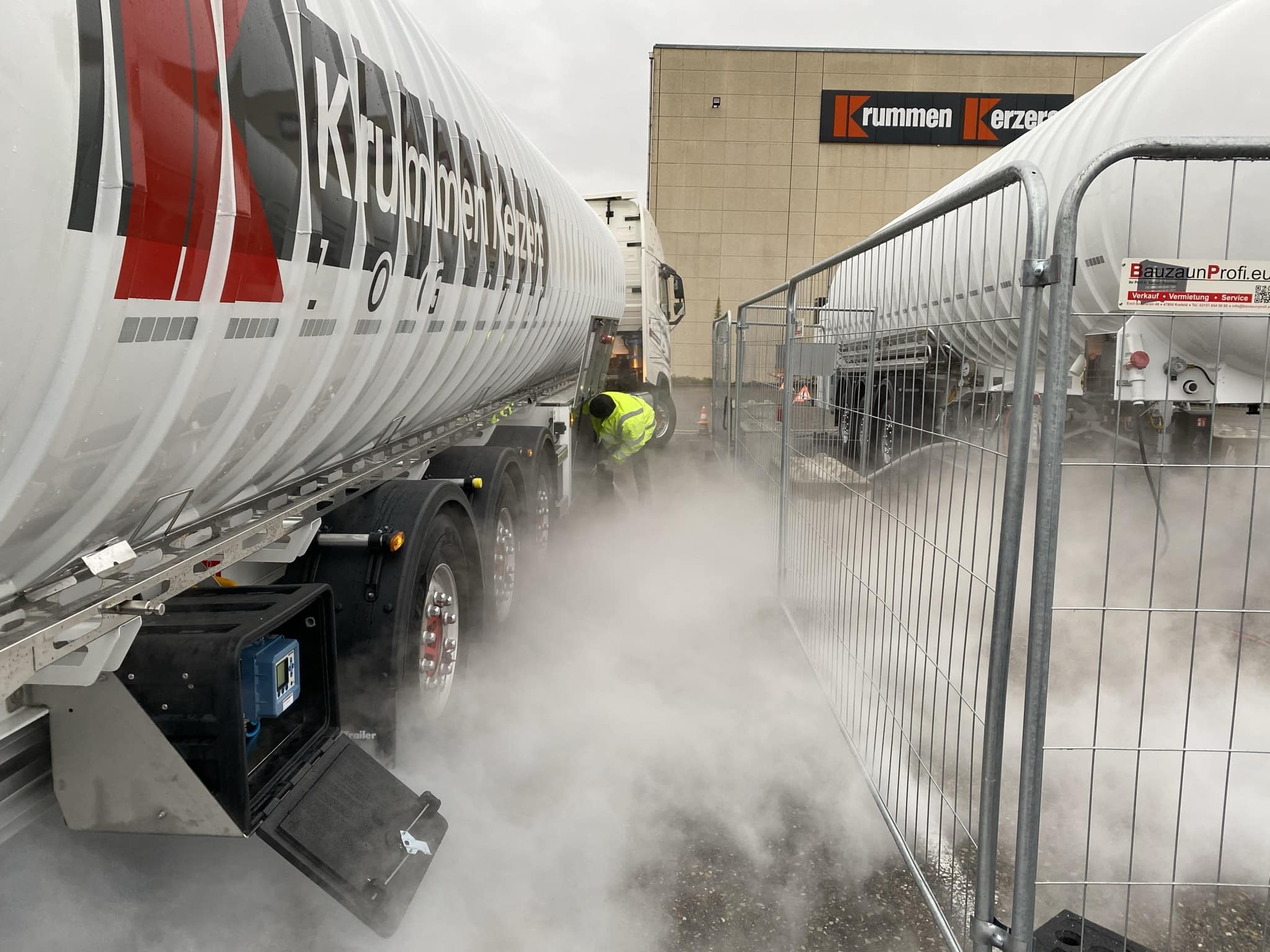 An LNG-powered truck refuelling at one of the three semi-private LNG refuelling stations set up by logistics company Krummen Kerzers. Source: Krummen Kerzers
An LNG-powered truck refuelling at one of the three semi-private LNG refuelling stations set up by logistics company Krummen Kerzers. Source: Krummen Kerzers
With three semi-private and, more recently, one public LNG filling station, this is not the most urgent measure – that is clear. What is surprising, however, is the reference to how the H2 filling stations are currently being handled. Especially when you consider that the first public H2 filling station has been in operation since 4 November 2016, not just recently. At that time, Coop opened a hydrogen filling station in Hunzenschwil AG, where both trucks and cars with fuel cell drives could be refuelled at 700 or 350 bar. Because with regard to H2 filling stations, Metas media spokesperson Hager reveals: “Filling pumps for hydrogen are not subject to the measurement regulations today. Depending on how the technology and the number of such filling stations develop, the regulations will be adapted in the future so that hydrogen filling stations will also be subject to measurement law.”
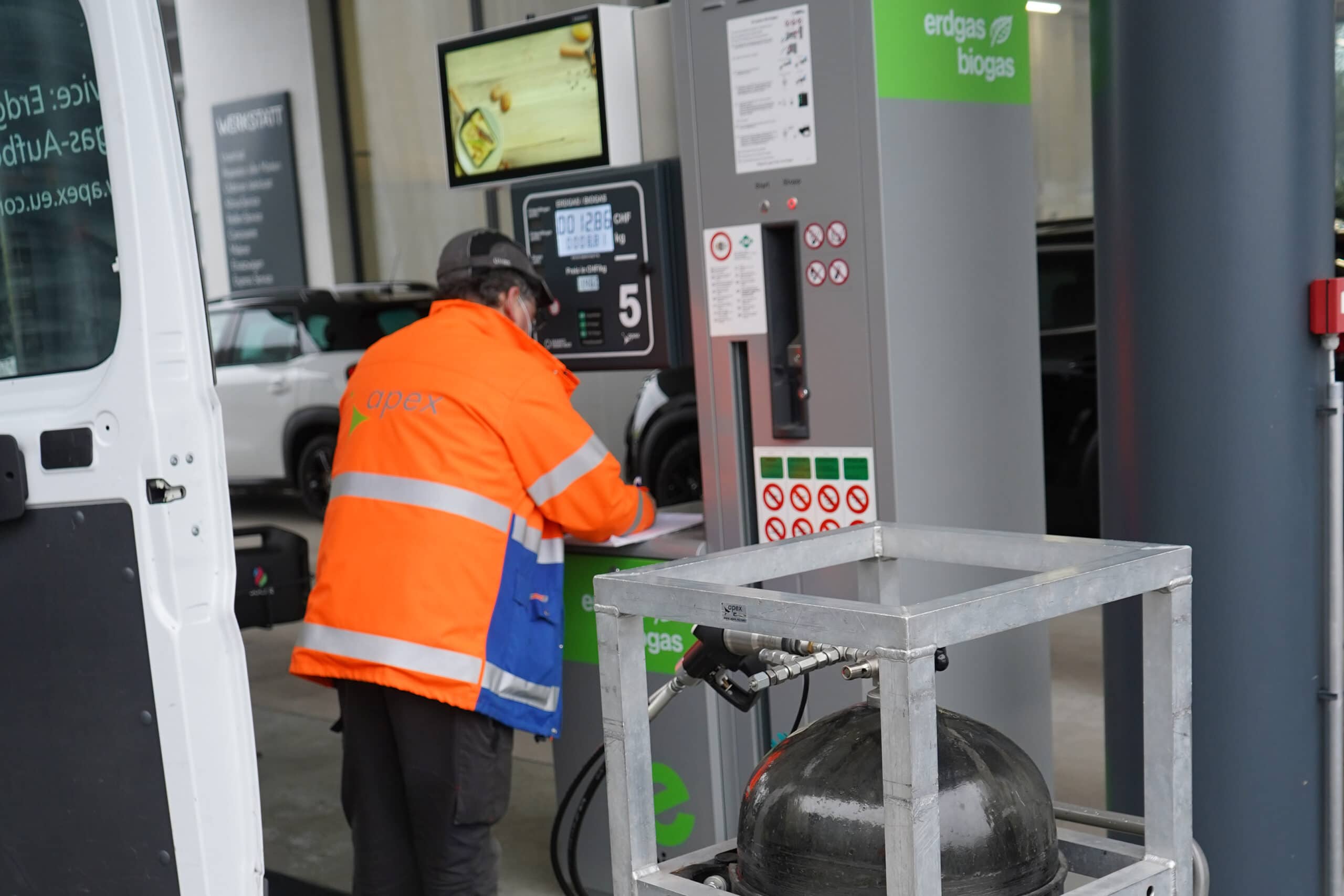 A deviation of two percent is permitted for a CNG filling station. If the measured value is below this, the flow meter is functioning properly and the dispenser is given the round, red calibration seal, which also provides information about when the next calibration is due. Source: CNG-Mobility.ch
A deviation of two percent is permitted for a CNG filling station. If the measured value is below this, the flow meter is functioning properly and the dispenser is given the round, red calibration seal, which also provides information about when the next calibration is due. Source: CNG-Mobility.ch
Metas has developed its own system for testing and calibrating hydrogen fuel pumps. “This system could serve as a basis for the calibration of hydrogen fuel pumps, provided that calibration is mandatory in the future,” adds Hager. It remains an open question why politicians and cantons did not take action earlier. After all, the first Swiss H2 filling station has already been in operation for over six years, so calibration would not be a disadvantage. The three semi-private LNG filling stations that have been in operation for less time were, for example, calibrated this March by the responsible cantonal calibration offices. “These are transport cisterns – trailers – with a built-in, approved and conformity-assessed measuring system, but which are operated in a stationary manner,” explains Uwe Kurle, a federally certified verification officer and president of the Association of Swiss Verification Officers. “Important: The principle here is already known from transport cisterns for cold-liquefied gases, such as nitrogen, oxygen or even noble gases.”
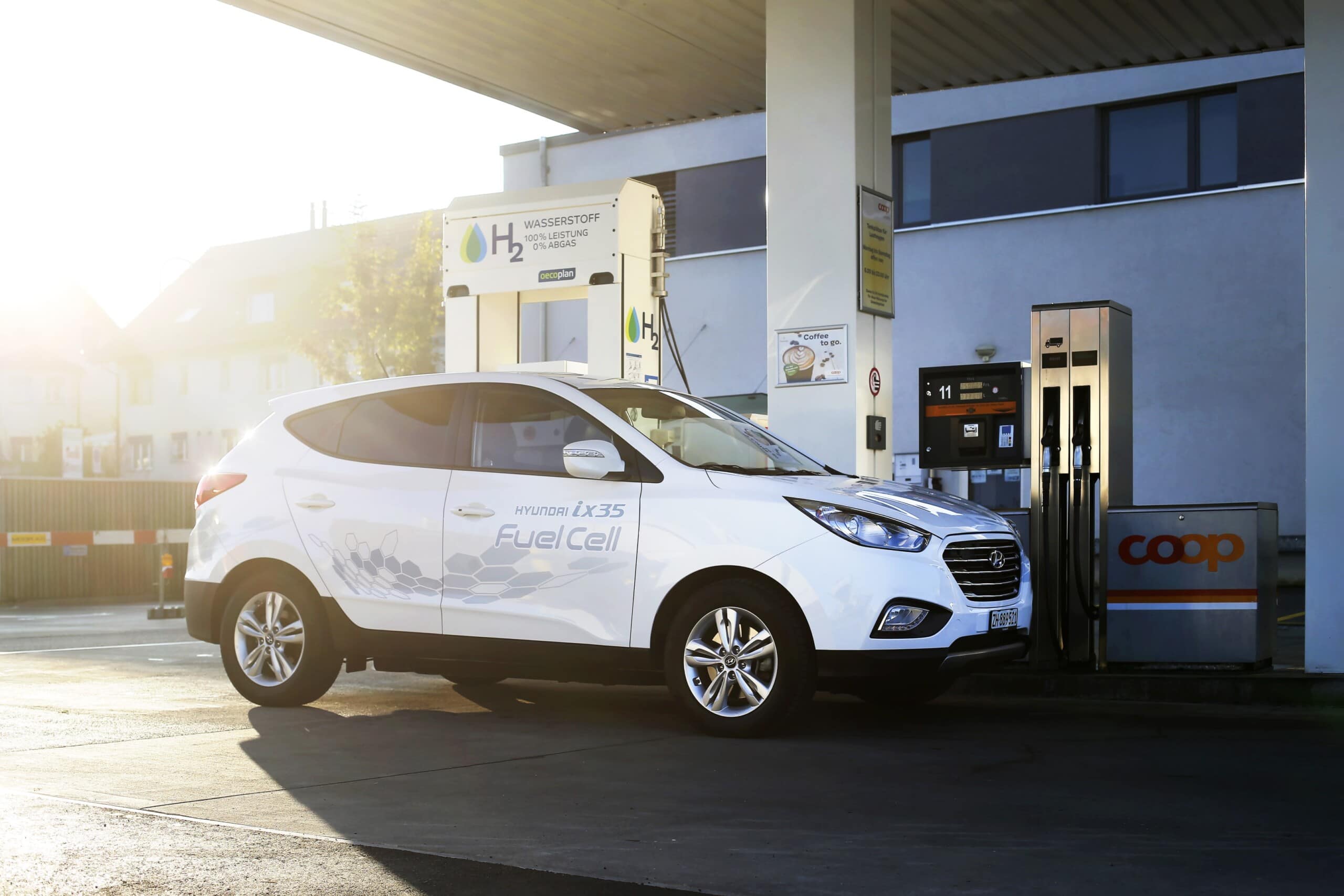 Coop’s hydrogen filling station in Hunzenschwil AG has been in operation since 4 November 2016. Source: Hyundai
Coop’s hydrogen filling station in Hunzenschwil AG has been in operation since 4 November 2016. Source: Hyundai
A mobile calibration system from a specialised testing service provider would be used as a reference measuring system for the calibrations at the LNG filling stations. Special attention must be paid to the safety aspect and personal protection at LNG filling stations, “on the one hand, these are cryogenic liquids with temperatures below minus 150 degrees Celsius, and on the other hand, explosion protection is also extremely important, especially with LNG. Accordingly, the measuring system must be well secured during calibration,” Kurle concludes. An aspect that will certainly also play an important role for hydrogen, which is no less explosive, when these filling stations are also calibrated one day. Until then, we must trust that hydrogen filling stations will work correctly in terms of technology and quantity even without calibration. (jas, 13 April 2023)
You might also be interested in
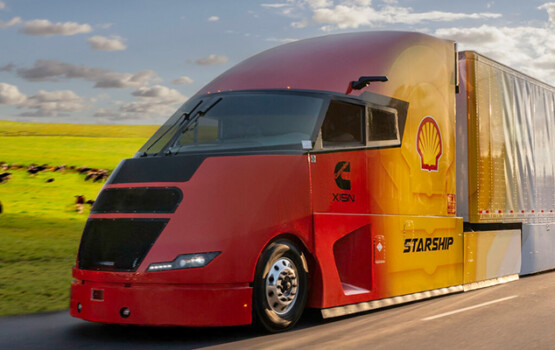
Shell Starship on record hunt
